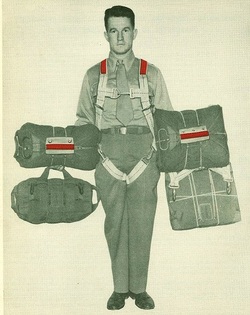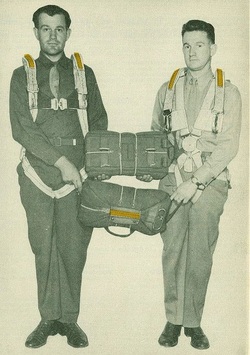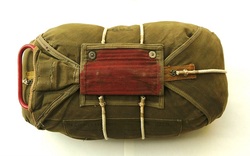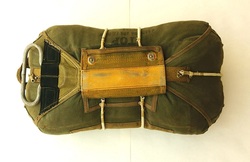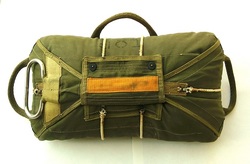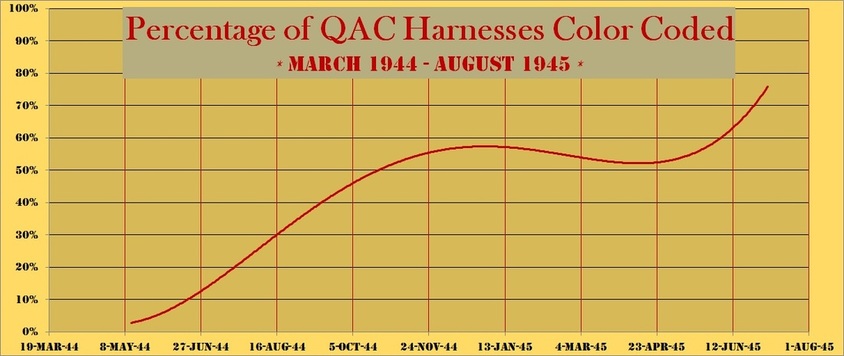By the end of 1944, the USAF was employing four Quick Attachable Chest (QAC) parachute harnesses and no less than five types of chest packs in the ETO. Already by early 1944, the improved A-3’s were filling the ranks alongside the then standard AN6513. The British Observer System, borrowed by the USAF, as well as the later quick-release A-4 assembly added to the plethora of similar, but not necessarily interchangeable, QAC parachutes. With all of the packs nearly identical save the hardware combination, the danger of accidentally grabbing the wrong pack in a hurried and hectic bailout situation was high.
To remedy this situation, Technical Order (T.O.) 13-5-39, issued May 1944, ordered the marking of packs and harnesses to prevent mis-identification. The various harnesses and chest packs were categorized and color coded into two groups based on their hardware combinations, namely the Red and Yellow groups. Group 1 Red parachutes had D-rings on the harness and snap fasteners on the pack tray; Group two retained the snap hooks on the harness and featured attachment D-rings on the packs.
Group 1 (Red) Group 2 (Yellow)
Three standard versions of this color coding were accomplished. Initially this marking was accomplished by painting pigmented nitrate dope onto the chest area of the harness and across the ripcord protector flap of the QAC pack. The amended order in September 1944, incorporated an improved method of color-coding for assemblies not previously marked or those with faded markings. Lengths of cotton tape, painted with the appropriate red or yellow color, were sewn to the front shoulder section of the harness and across the ripcord protector flap of the pack tray. Concurrently, manufacturers amended production and incorporated sewn strips of professionally dyed cotton tape in the appropriate colors.
All crew members of a specific aircraft were to be equipped with gear from the same group to prevent mix-ups, and each man was to physically attach his pack before each flight to ensure the correct match. However, photographic evidence suggests that crews equipped with a motley of equipment was the rule, rather than the exception.
Although the document was boldly stamped “IMMEDIATE ATTENTION” and ordered to be conducted before the next 10-day inspection, many QAC's went months before being painted and some were never marked before the war’s end. The following graph, based on a photographic analysis of approximately 900 8th AF bomber crews, depicts the sluggish upward trend of the marking operations.


